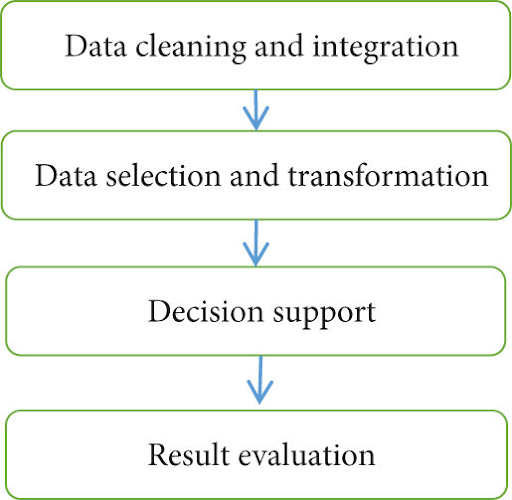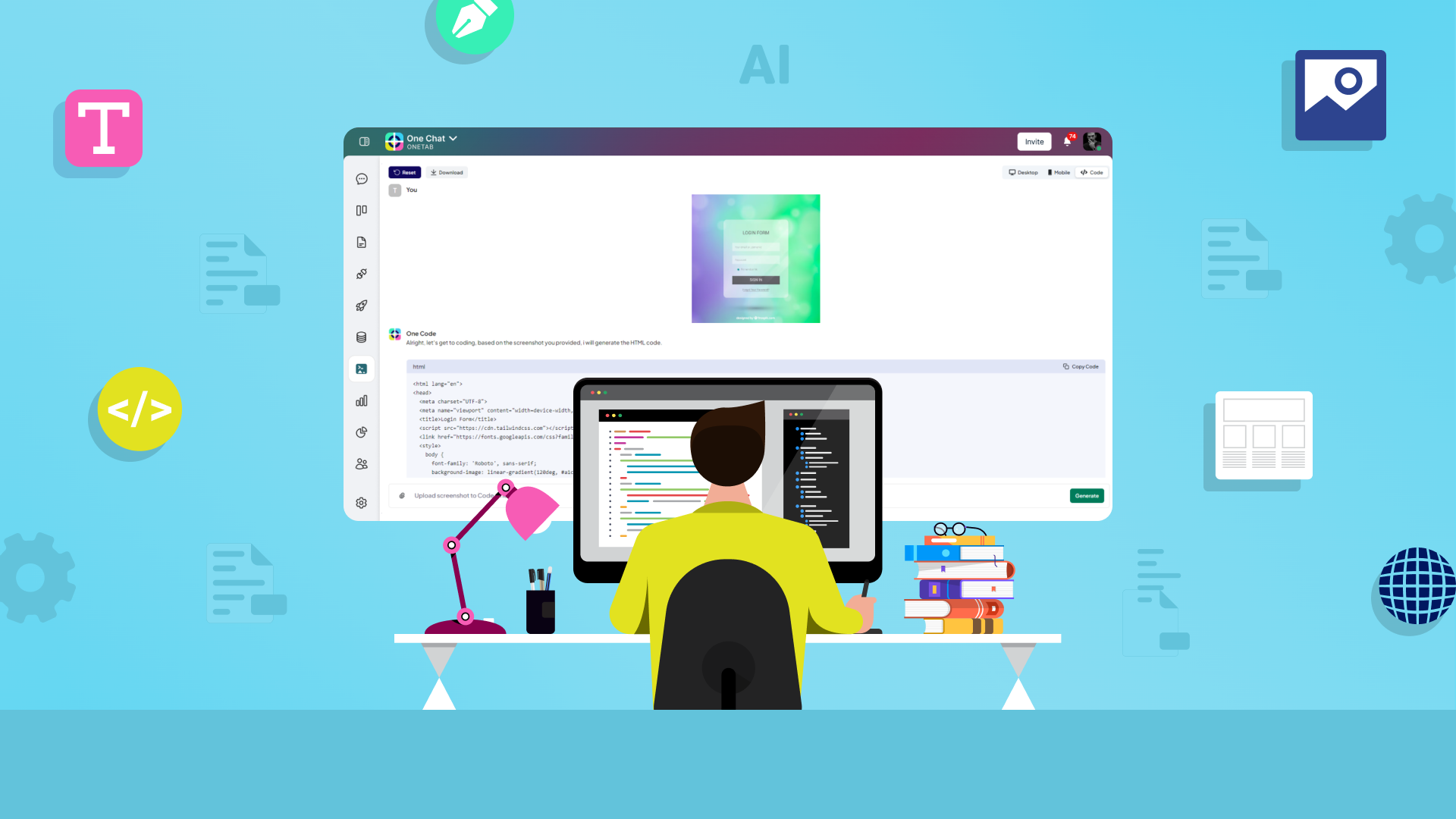AI Code Generation for Efficient Software Development
As projects become more complex, AI code generation’s relevance becomes increasingly important. It enables efficient AI code writing, leveraging artificial intelligence code to facilitate faster and more accurate coding practices. By integrating AI into the development process, professionals can enhance work quality and accelerate project timelines, aligning more closely with organizational goals. This shift elevates the coding experience and empowers developers to tackle more creative and high-value challenges in their work.
Generate Code Instantly!

What Is AI Code Generation?
AI code generation refers to the automated process of creating source code using AI algorithms that analyze vast datasets of existing code. These systems learn patterns and best practices, enabling them to generate new code based on specific requirements.
For example, instead of manually writing code for a particular part of the website, you can add a screenshot to AI and get a code through an image-to-HTML converter. The AI code’s meaning lies in its ability to interpret needs, analyze existing structures, and produce solutions adhering to coding standards. This automation enhances development efficiency and accuracy.
Understanding AI Code Generation: How Does It Work?
AI code generation works through a good blend of several advanced technologies:
1. Machine Learning Models
Machine learning models are at the heart of AI code generation, particularly those trained on vast datasets of existing code. These models, powered by deep learning algorithms, learn the syntax, structure, and intricacies of various programming languages like Python, JavaScript, and others. The model can generate new code based on a user’s input or problem statement by analyzing these patterns. This training allows it to handle basic and complex programming tasks, from writing simple functions to crafting advanced algorithms.
Train Smarter and Visualise Better

2. Natural Language Processing (NLP
Natural Language Processing (NLP plays a key role in AI code writing. It enables AI systems to understand and process human language. When a user provides instructions such as “Build a login system,” the NLP engine interprets the intent behind the user’s request. It translates this human input into a format the AI can process, eventually turning it into machine code. This step is crucial because it bridges the gap between how humans communicate needs and how machines process those commands.
3. Code Prediction and Generation
Once the input is understood, the code generator AI predicts and generates relevant code snippets. For instance, if a user requests “Create a REST API for user authentication,” the AI might generate code that defines endpoints, handles data validation, manages security, and takes care of error handling—all based on established programming best practices. This AI-generated code is functional and adheres to coding standards, making it immediately usable in most cases.
Visualize Smarter

Step-by-Step Process of AI Code Generation:
- Input Understanding: The user provides an input or request using natural language.
- NLP Interpretation: The AI interprets the request using NLP and breaks it into actionable programming tasks.
- Code Prediction: Using its knowledge from prior training, the AI predicts what the code should look like.
- Code Generation: The AI then generates the AI code, delivering everything from basic structures to complex functionalities.
These combined mechanisms enable AI code generation to simplify coding tasks, reduce manual effort, and provide high-quality, production-ready code. The seamless interaction between machine learning, NLP, and predictive modeling allows AI to perform complex AI code-writing functions efficiently.
Flowchart for AI Code Generation Process

The Impact of AI Code Generation Across Industries
The applications of AI code generation are diverse, impacting various sectors and illustrating its versatility in addressing specific coding challenges.
Speeding up Coding Tasks in Web Development
In web development, AI tools can automate the creation of standard code components, such as user authentication systems, API integrations, and responsive layouts. By generating these foundational elements, seasoned professionals can dedicate more time to designing unique features and enhancing user experiences. This capability leads to faster delivery of high-quality web applications that meet users’ ever-evolving demands.
For instance, platforms like Shopify utilize AI-driven solutions to enhance their development process, enabling teams to focus on innovative features that improve user experiences. This shift accelerates project timelines and leads to higher-quality applications that can swiftly adapt to user needs.
Simplifying Repetitive Tasks in Machine Learning and Data Science
AI code generation presents substantial advantages for those immersed in machine learning and data science. By automating the generation of model training scripts, data preprocessing routines, and exploratory data analysis code, AI tools like DataRobot help streamline workflows. This efficiency allows experts to concentrate on extracting insights from data rather than becoming bogged down by repetitive coding tasks, resulting in quicker time-to-market for data-driven solutions.
| 💡 Building apps for both iOS and Android shouldn’t feel like a juggling act. Let onetab.ai handle the heavy lifting so you can focus on what truly differentiates your app in a crowded market. |
Mobile App-Specific Coding
In mobile app development, AI-generated code can address platform-specific requirements for both iOS and Android, ensuring optimal performance across devices. AI tools comprehending each platform’s guidelines can produce code that functions smoothly and adheres to design standards, enhancing the overall user experience.
Flutter, Google’s UI toolkit, exemplifies this by automating the coding process, enabling developers to create cross-platform applications effortlessly. This capability allows for rapid iterations and responses to user feedback, ultimately enhancing overall user satisfaction.
Challenges in AI Code Generation
Despite its promise, AI code generation faces several challenges that warrant attention.
- Quality Control
One significant concern is the quality of AI-generated code. While these tools can produce functional code snippets, they may not consistently adhere to best practices or project-specific standards. Implementing rigorous review processes ensures that the generated code aligns with project objectives and maintains a high-quality standard. This human oversight is crucial in preventing the introduction of bugs or security vulnerabilities.
- Solving Problems Where Human Input Matters
AI excels at automating routine coding tasks but may need help with innovative problem-solving. Complex projects often demand creative solutions that transcend conventional templates. Depending solely on AI-generated code can result in a lack of originality in software design.
| 💡 Finding the right balance between automation and human creativity is essential to achieving outstanding results. |
- Contextual Understanding
Another challenge is the ability of AI to grasp nuanced project requirements accurately. Misinterpretations can lead to code that fails to meet user expectations. Therefore, the evolution of AI technologies should focus on enhancing contextual understanding to bridge this gap effectively.
How AI Code Generation is Shaping the Future of Software Development
AI code generation is a transformative force in the software development landscape. By automating the coding process and enhancing workflows, these tools empower professionals to concentrate on higher-level tasks that require strategic thinking and creativity. The future of coding is evolving, with AI at the forefront, promising to reshape the landscape to enhance the entire development process.
